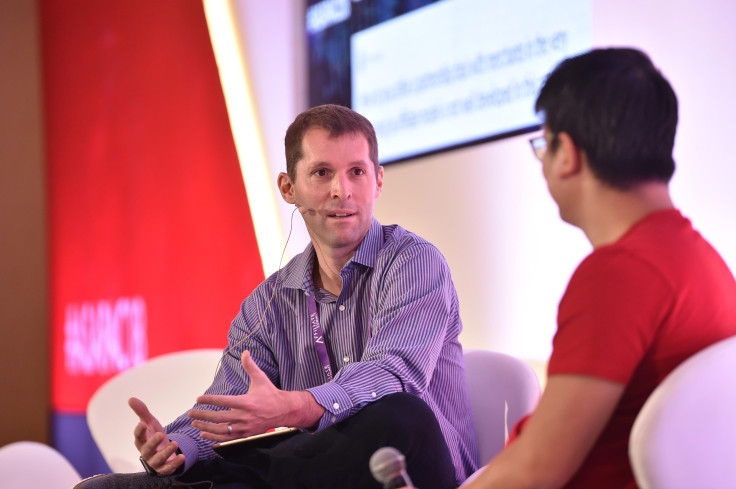Too Many Employers And Employees Are Locked In A Zero Sum Game Power Struggle
Accelerated Partners founder advances a better way.

Last year, at the height of the Great Resignation, I was on a panel discussing the future of global workplaces. One question asked was, "What are employees looking for most in today's workplace?"
At the time, many businesses were experiencing an employee retention emergency -- after all, 47 million Americans quit their jobs in 2021. That's probably why one of the panelists gave a pretty audacious answer: They surmised that employees most want to be able to work where they want, how they want and on what they want.
The panelist was probably correct, in a vacuum; many employees do want that degree of freedom. However, I felt compelled to note that I believed such approach was neither realistic nor healthy for an organization, and that it reflected a highly individualistic mindset. Someone who really wants that level of autonomy is probably better off working in the gig economy, or even starting their own business. But in a moment where employees held outsized power in the labor market, it was commonplace for employees to demand the world from their workplaces.
One of the lingering fallouts of the 2008 recession was that we spent the better part of the next decade in a labor market where employers wielded significant power in the employee-employer relationship. But in 2021, this dynamic changed almost overnight, shifting the balance of power to employees in a way never seen before.
Newly gained power has a way of corrupting, and many employees mirrored the types of powerplays employers had practiced with for years. Employees were suddenly threatening resignation if they were not given large raises and/or promotions. Prospective employees were frequently ghosting for interviews, or even accepting a job only to take a better offer later and not show up on the first day of work. Many of these people showed the same focus on money over loyalty and general discourteousness that employees criticized their companies for displaying in the years before.
But now, with the Federal Reserve putting the brakes on the economy to cull inflation, the pendulum may start to swing back; recession fears and a wave of layoffs in the tech world have knocked the Great Resignation out of the headlines. After a year of scrambling to meet employee demands, business leaders may find themselves in the inverse situation: a tightened labor market where supply exceeds demand.
If we find ourselves in that environment, many businesses will again have the upper hand. Some leaders will likely relish the opportunity to get payback for many of the actions taken by current and former employees during the Great Resignation.
But looking to leverage a temporary power dynamic is a mistake that ignores the opportunity to find a more sustainable middle ground. Here's how everyone can work toward a more equitable, balanced and respectful workplace in any market.
Focus on the long-term
Leaders and managers are wondering how the tightening labor market could impact how they treat employees, especially after treading lightly for over a year. But the answer to this question is constant, not variable: Leaders should focus on treating people kindly and respectfully, while making talent decisions that are in the business's long-term best interest.
A great example is boomerang employees -- departed employees who want to return. During 2021, many employees were coaxed away from their workplaces and jobs they enjoyed by relentless recruiters who promised better pay and more autonomy. But the data shows there has been substantial buyer's remorse. Many employees quickly realized their new job wasn't what they expected and placed feelers to their old workplace to discuss a potential comeback.
Leaders often struggle to respond in this situation. Employee departures often are bumpy and can elicit hard feelings, especially if the exit is made with little notice or the employee leaves their former colleagues with a ton of loose ends. Some respond to a potential boomerang employee with bitterness, wondering why they should take the employee back so soon after they've quit.
But leaders should put aside their feelings and pride and ask this: Was the former employee a strong contributor and a good culture fit? If the answer is yes, then it's a no-brainer: The leader should rehire the employee and let bygones be bygones. Plus, that employee is less likely to jump again when presented with another opportunity.
This principle applies to all employee relationships -- employers shouldn't hold grudges or lean into the temptation to settle scores just because they suddenly hold the power. Instead, they should recognize that retaining great people is crucial to any company's long-term success and seek to strengthen relationships with employees during an uncertain environment when those efforts are most appreciated.
Pave two-way streets
The Great Resignation was the culmination of a trend I like to call workplace individualism: a mindset wherein employees seek to optimize their professional situation at any given time by maximizing their autonomy, pushing back on authority and using job-hopping to get better titles and quick raises.
Simply put, this approach puts what's best for the individual first and foremost. And this is an especially understandable response when someone has worked with a mercenary leader, such as an entrepreneur or executive who puts their needs above everyone else's. However, it's also impossible to grow a company with shared goals if everyone adopts this attitude -- it would essentially operate like a basketball team where every player wants to take every shot.
There may soon be an opportunity for leaders to return to that mercenary mindset, but the workplace individualism that followed it is exactly why they shouldn't. Instead, leaders should remember that the best relationships are a two-way street and should set that standard with their teams.
Two years of pandemic work -- most of it remote -- allowed employees to show leaders that they can be accountable to their essential outcomes without constant supervision. Knowing that, leaders should allow their employees to set a schedule that allows them to do their best work and help them structure their workday to be fully present outside of work as well. Flexibility doesn't mean an employee can change their working hours without warning or take a vacation with a day's notice. But an employee should be able to take breaks each day for school drop-off and pickup, as long as they clear it with their manager and are held accountable for delivering all their key outcomes.
Conversely, leaders should set the expectation that employees need to be flexible as well when the business requires it. If a sales team gets a Friday afternoon request for a multi-million-dollar sales pitch that upcoming Monday morning, some weekend preparation will be required before that crucial meeting. If a person can't accomplish a crucial task before they leave work to watch their child's sports game, they may need to put in time early the next morning to ensure it's complete.
Employee-employer relationships must be a two-way street -- any meaningful team accomplishments require some degree of individual sacrifice. As a leader, it's imperative to not only set realistic expectations of when it's necessary to go the extra mile, but also to offer the autonomy and flexibility that makes those sacrifices worthwhile.
Decency and respect should also be a two-way street. There is no market environment in which a candidate should ghost a job interview or a company should ghost a candidate who took the time to interview.
Find a win-win
Perhaps the most frustrating thing about power shifts between employees and leaders is that it entrenches the idea that these two sides are stuck in zero-sum battle for control. In reality, there is a third way: to create a structure in which companies grow by helping their people grow.
One of the greatest challenges every leader faces is to make their organization's needs paramount, even if it upsets individual employees. Employees often see managerial decisions from their individual perspective, whereas the leader is using a broader lens to make the best decision for the largest number of people. However, that doesn't mean it's impossible to create a win-win scenario where the company's success is directly tied to employee growth as well. Often, this means creating shared incentives between companies and their employees.
For example, leaders can ensure top performers get equity or bonuses tied to key company metrics. This is a great way to ensure top performers are incentivized to achieve the outcomes the business needs to keep growing. If you want your people to prioritize the company's bottom line, ensure they are rewarded by strong bottom-line performance.
Leaders can also use company growth to invest in their employees' development and ensure employees see the company's growth as tied to their own development. Rather than following the popular Silicon Valley playbook of building by burning through employees -- a strategy that appears less effective with each tech company earnings report -- leaders should seek to build their employees' capacity and help them grow at the same rate of the business. Investing in proactive management and leadership training, giving employees time and resources to learn about things they're passionate about and even helping employees discover their own personal core values can help on this front.
This, of course, creates a flywheel effect: The business grows, which allows for greater investment in talent development, which drives better employee performance, which creates more business growth. This virtuous cycle benefits employees and leadership without needing to worry about which way the pendulum is swinging.
As the economic environment grows more unsteady, leaders have a choice. They can seize the power they lost in the Great Resignation and make employees feel the heat, or they can turn down the temperature and build a workplace that fosters trust, respect and mutually beneficial outcomes.
(Robert Glazer is the founder and immediate past CEO of Acceleration Partners.)
© Copyright IBTimes 2024. All rights reserved.












